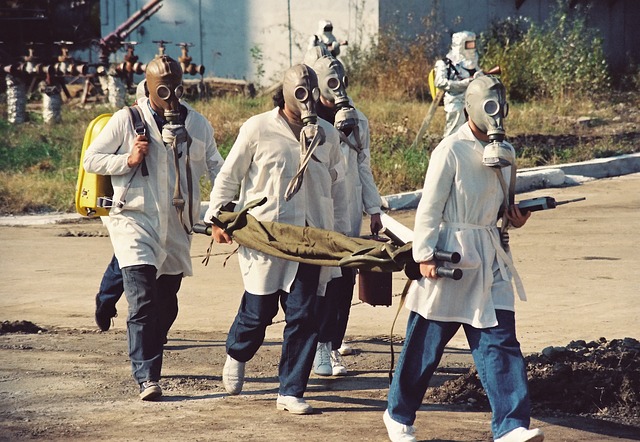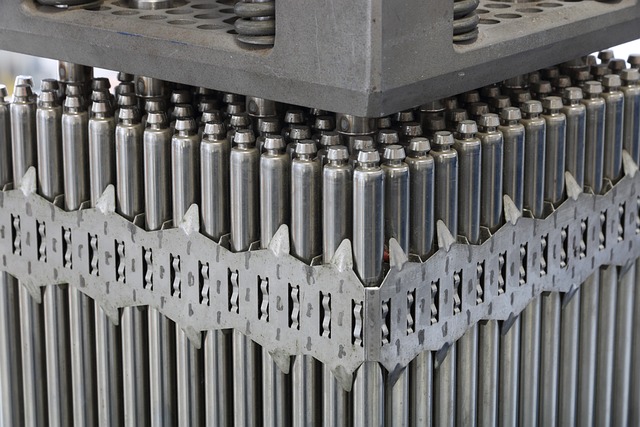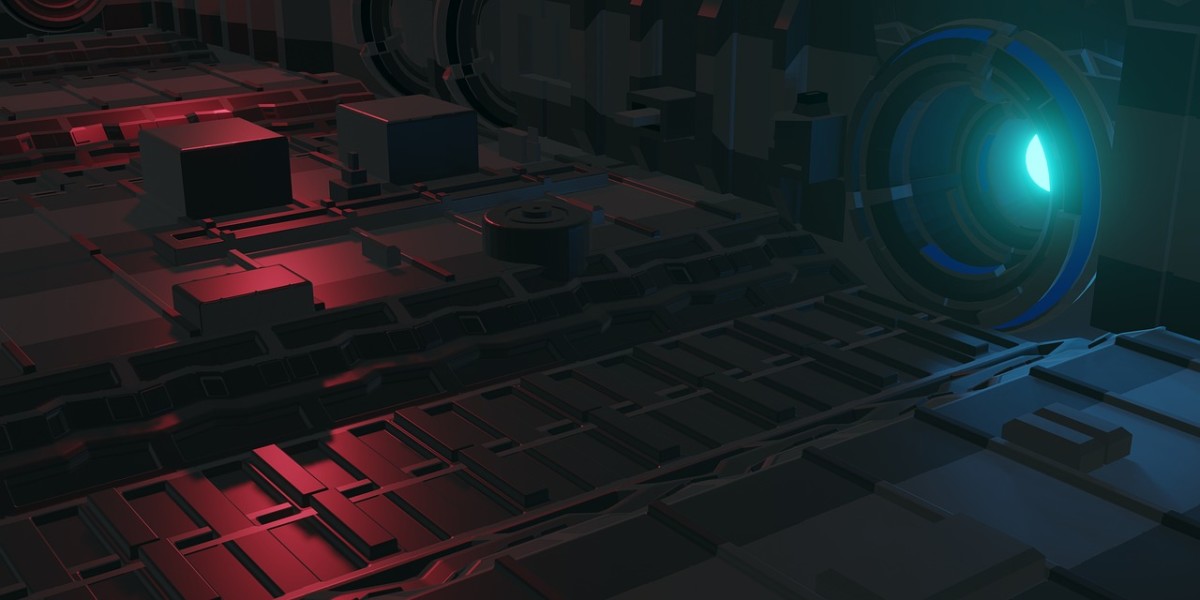Types Of Nuclear Reactors That Are In Use Today
Nuclear power is one of the most efficient sources of energy available to us today. It has been used in multiple forms since its discovery, but the focus here is on the types of nuclear reactors that are currently in use around the world.
Nuclear reactors can vary in size, type, and purpose, with each having its own advantages and disadvantages.
Although originally designed for military purposes, nuclear energy is now used as a safe and reliable source of power in many countries.
This article will explore some of the different types of nuclear reactors that are currently in use today, their characteristics, and their applications.
What are the types of nuclear reactors in use today?
Nuclear reactors are a technology that has been around for decades and continues to be used for many different applications. Nuclear reactors come in various shapes and sizes, each with its unique capabilities.
In this article, we will be discussing the types of nuclear reactors that are currently in use around the world today.
There are three main types of nuclear reactor designs: pressurized water reactor (PWR), boiling water reactor (BWR), and gas-cooled reactor (GCR).
PWRs use pressurized water as their coolant, while BWRs use boiling water to generate steam which is then used to power turbines.
GCRs utilize carbon dioxide or helium as the coolant medium, instead of water or steam like PWRs and BWRs. Each type has advantages and disadvantages depending on the application they are being used for.
What are the benefits of using nuclear reactors?
Nuclear reactors provide a clean, efficient and affordable way to generate power. There are many different types of nuclear reactors that are currently in use today and each one offers unique benefits.
One of the main benefits associated with nuclear power is the fact that it produces massive amounts of electricity without emitting any greenhouse gases or other pollutants into the air. This means that it has a minimal environmental impact when compared to traditional sources of energy such as coal and oil.
Additionally, nuclear energy is relatively inexpensive when compared to other forms of energy production because uranium, which serves as fuel for most nuclear reactors, is abundant and inexpensive to mine.
One of the main disadvantages associated with nuclear power is the fact that it results in the production of radioactive waste, which requires careful disposal.
Additionally, there is always a risk that something could go wrong at one of these plants and cause a major environmental disaster.
What are the risks associated with using nuclear reactors?

Nuclear reactors are commonly used to generate power, but there are certain risks associated with their operation.
Before exploring the different types of nuclear reactors that are in use today, it is important to understand the potential hazards posed by each type of reactor. Nuclear reactors produce large amounts of energy and can be dangerous if not managed correctly.
Nuclear waste and radiation leaks pose environmental severe threats and can cause long-term health problems for humans exposed to them. Furthermore, a nuclear meltdown could result from human error or design flaws, leading to severe radiation contamination in the surrounding area.
Safety protocols must be strictly followed when working with a nuclear reactor and specialized equipment is often required to ensure safe operations. Despite these measures, accidents still occur due to improper handling or unforeseen issues such as natural disasters or mechanical failures.
Nuclear designs for the future
Nuclear designs for the future are an exciting and promising field of research, as nuclear energy has tremendous potential as a reliable source of clean energy.
The ability to generate large amounts of electricity with relatively low emissions is a huge draw for many countries looking to reduce their carbon footprint. With the right technology and development, nuclear reactors could become even more efficient in the years ahead.
Today, there are several different types of nuclear reactors in use around the world. Light water reactors dominate the industry, providing up to two-thirds of all atomic energy generated globally.
Pressurized heavy water reactors also make up a significant portion of worldwide production and are used in countries such as India that lack access to natural light water supplies.
Finally, fast breeder reactors offer an alternative way to produce both power and additional fuel from existing sources.
What are the pros and cons of each type of nuclear reactor?
Pressurised water reactors (PWRs)
Pressurised water reactors (PWRs) are one of the most commonly used types of nuclear reactors that are in use today. PWRs use enriched uranium fuel rods, which generate heat to create steam. The steam is then pressurized by a coolant, typically water, and heated to produce electricity.
This type of reactor was first developed in the 1950s at the Oak Ridge National Laboratory in Tennessee and has since become the standard for nations looking to generate power with nuclear energy.
PWRs can achieve high-efficiency levels through their ability to constantly recycle their own coolant water back into their system without having to replace it completely.
Additionally, they provide an efficient level of safety and control through a variety of systems which includes pressure regulation valves and emergency cooling systems that can be activated during accidents or emergency situations.
Boiling water reactors (BWRs)
The Boiling Water Reactor (BWR) is a type of nuclear reactor that is used today to generate electricity. This type of reactor uses water as the primary coolant and moderator, and its design makes it one of the most common reactor types in the world.
The BWR works by splitting uranium atoms to release energy, which heats up the water around it and causes it to boil. The steam produced then pushes against turbine blades to turn a generator shaft and create electricity.
Safety is an important factor when dealing with nuclear reactors, and BWRs are no exception. They feature several safety systems that can be activated if something goes wrong during operation, such as emergency core cooling systems which inject coolant into the core if temperatures become too high.
Additionally, these reactors are designed with containment buildings that act as a barrier between any radiation released and people outside of the facility.
Pressurised heavy water reactors (PWHRs)

Pressurised heavy water reactors (PWHRs) are a type of nuclear reactor that is currently in use around the world. These reactors are fuelled by natural uranium and use heavy water as both a coolant and moderator.
Working at relatively high temperatures, pressurised heavy water reactors (PWHRs) can produce large amounts of energy while also maintaining safety standards. The reactor’s fuel core contains hundreds of fuel rods, each containing pellets that contain enriched uranium-235.
The fuel core is surrounded by pressure tubes filled with heavy water which acts as a moderator to maintain the chain reaction and ensure efficient heat transfer from the core to the environment through a steam generator.
PWHRs have several advantages compared to other types of nuclear reactors such as their low capital cost, enhanced safety features, and lower levels of thermal pollution making them an attractive option for many countries.
Small modular reactors (SMRs)
Small modular reactors (SMRs) are a type of nuclear reactor technology that is becoming increasingly popular. In fact, they may become the preferred choice for nuclear power production in the near future.
SMRs are compact and self-contained units, usually smaller than traditional reactors, which use passive safety systems to shut down or mitigate accidents.
They produce relatively low amounts of radioactive waste compared to other types of nuclear reactors and can be built in factory settings before being shipped to the intended site. SMRs offer several advantages over their larger counterparts such as lower construction costs, shorter build times, and increased operational flexibility.
Furthermore, these smaller plants can be used on military bases and remote sites where large-scale facilities are not viable options due to size constraints or lack of infrastructure.
SMRs generate much less waste than traditional reactors which makes them an attractive option from an environmental standpoint.
Not only do these reactors fulfill necessary energy needs without compromising safety or sustainability targets but they also provide unique economic benefits by creating jobs in highly technical fields and providing local sources of power production where previously none existed.
Liquid metal fast reactors (LMFRs)
Liquid metal fast reactors (LMFRs) are a type of nuclear reactor that is gaining interest among researchers and nuclear energy advocates. LMFRs offer higher efficiency, increased safety, and improved sustainability compared to other types of nuclear power plants.
They use plutonium or uranium-233 fuel to generate energy with the help of liquid sodium as a coolant. This technology has been in development since the 1950s, but it’s only recently that the potential for large-scale deployment has become a reality.
The main advantage of LMFRs over traditional pressurized water reactors (PWR) is their ability to consume spent fuel from conventional PWR plants by using pyroprocessing techniques, resulting in significant reductions in waste generation.
Additionally, LMFR technology can be employed to create an advanced closed-cycle system that produces no additional long-lived radioactive waste products.
Molten salt reactors (MSRs)
Molten salt reactors (MSRs) are a type of nuclear reactor that is gaining attention due to their potential for improved safety, efficiency, and cost-effectiveness.
Using liquid fuel rather than solid fuel, MSRs can operate at higher temperatures and make use of thorium as a nuclear fuel instead of uranium. This makes them more efficient and reduces the amount of waste generated. In addition, their design allows for easy refueling without having to shut down the reactor completely.
The proliferation of MSR technology has been slowed in recent years due to limited research funding, but there is growing interest in the development of this promising technology.
Companies such as Thorcon Power have already begun building prototypes with plans to build full-sized commercial reactors in the near future.
High-temperature gas-cooled reactors (HTGRs)
High-temperature gas-cooled reactors (HTGRs) are a type of nuclear reactor that is currently in use around the world. Developed in the 1950s, HTGRs use graphite as a moderator and helium or carbon dioxide as a coolant.
Instead of boiling water to produce steam which then turns turbines to generate electricity like traditional nuclear reactors, HTGRs have pebble-bed cores made up of hundreds of thousands of fuel elements. This design allows for more efficient heat transfer and greater safety due to its inherent stability and passive cooling system.
The high temperature produced by HTGRs can be used for other purposes such as providing process heat for industrial applications or generating hydrogen fuel from water.
Nuclear fusion reactors
Nuclear fusion reactors are a type of nuclear reactor that is gaining attention due to their potential to revolutionize the way energy is produced. Fusion relies on the same process as the one that powers stars, fusing light elements together to produce large amounts of energy.
This clean, renewable form of energy has been studied for many years but was never able to become commercially viable until recently.
With advances in technology, researchers are now closer than ever before to creating a working nuclear fusion reactor. The concept behind fusion is simple: two small atoms fuse together and create a larger atom which releases large amounts of heat and radiation in the process.
This same principle could be applied on Earth using powerful magnets and lasers to create a sustained reaction inside the reactor core.
In conclusion, nuclear reactors are a powerful and efficient energy source for countries around the globe. They offer sustainable, long-term solutions that can reduce greenhouse gas emissions and combat climate change.
There are numerous types of reactors in use today, including pressurized water reactors, boiling water reactors, and fast breeder reactors.
Advancements in technology have made nuclear technology safer than ever before. Going forward, it is essential to continue developing new designs and technologies to ensure the safe use of nuclear power worldwide.
Recent Posts
Wind Energy and Its Economic Benefits for Local Communities Firstly wind energy has emerged as a powerful driver of economic development, particularly in local communities. It provides a...
Potential Energy in a Spring: Understanding the Fundamentals
Potential Energy in a Spring Firstly, understanding the potential energy in a spring is fundamental to grasping how energy is stored and transferred in various physical systems. Springs, as...


